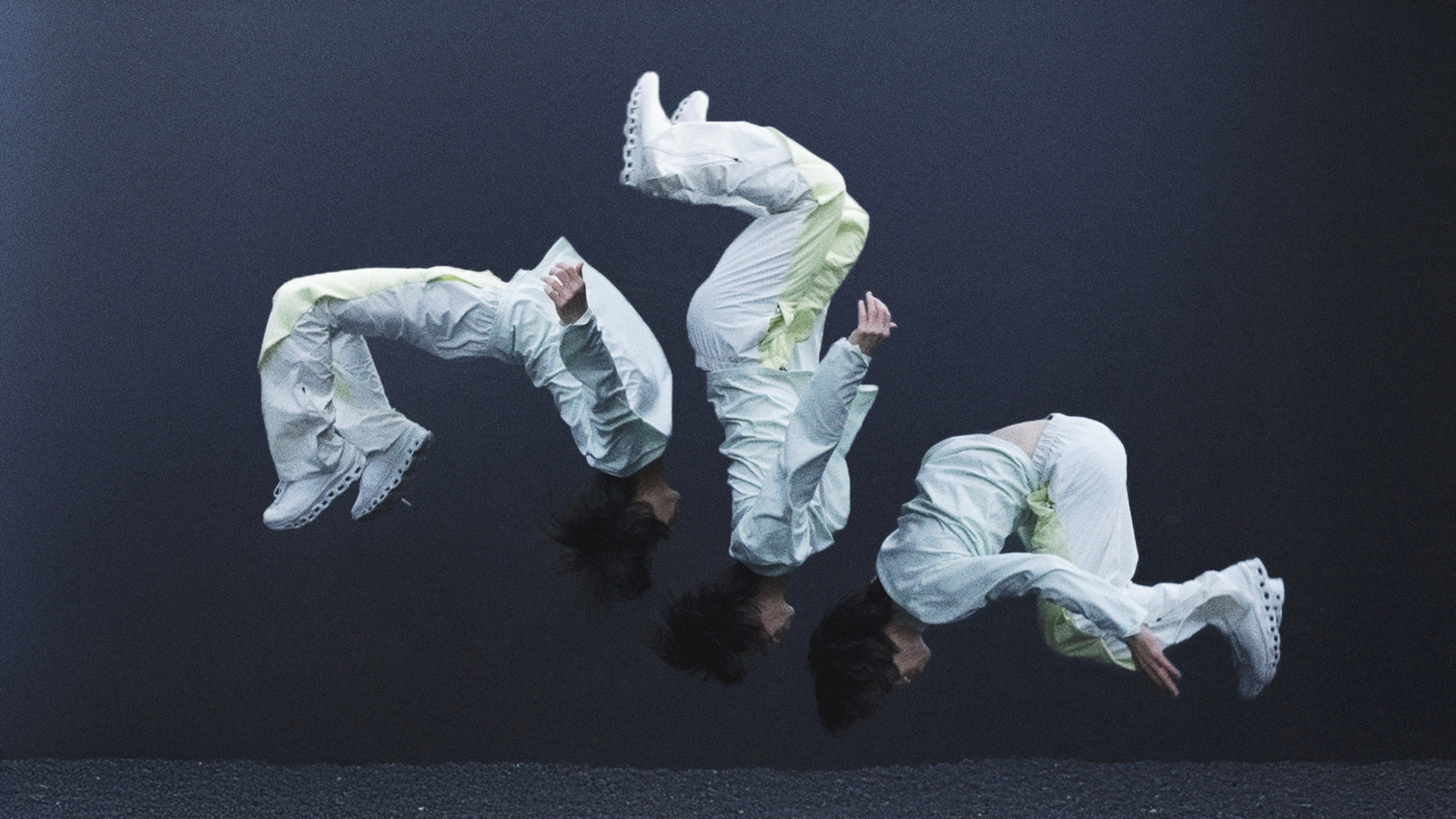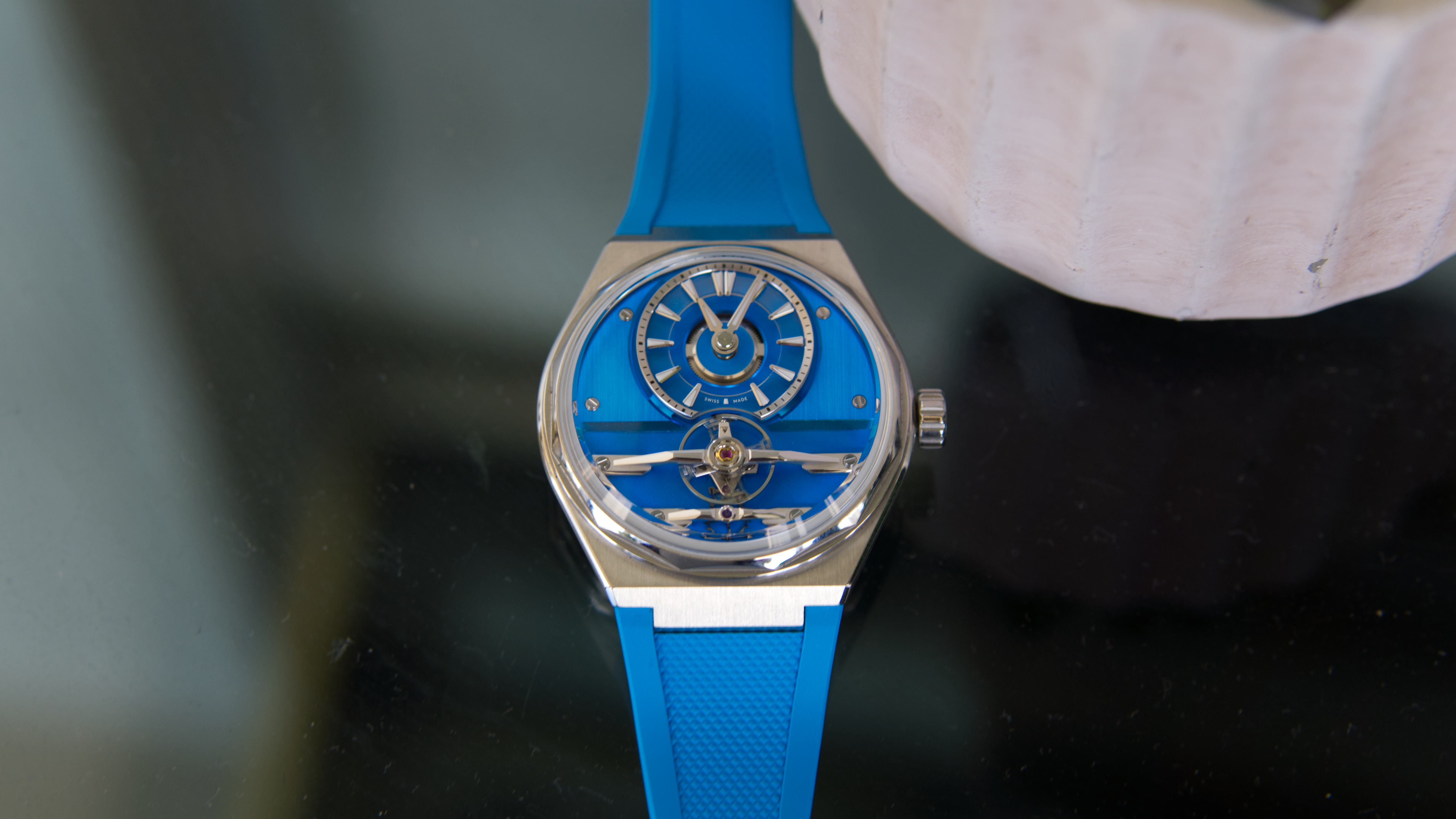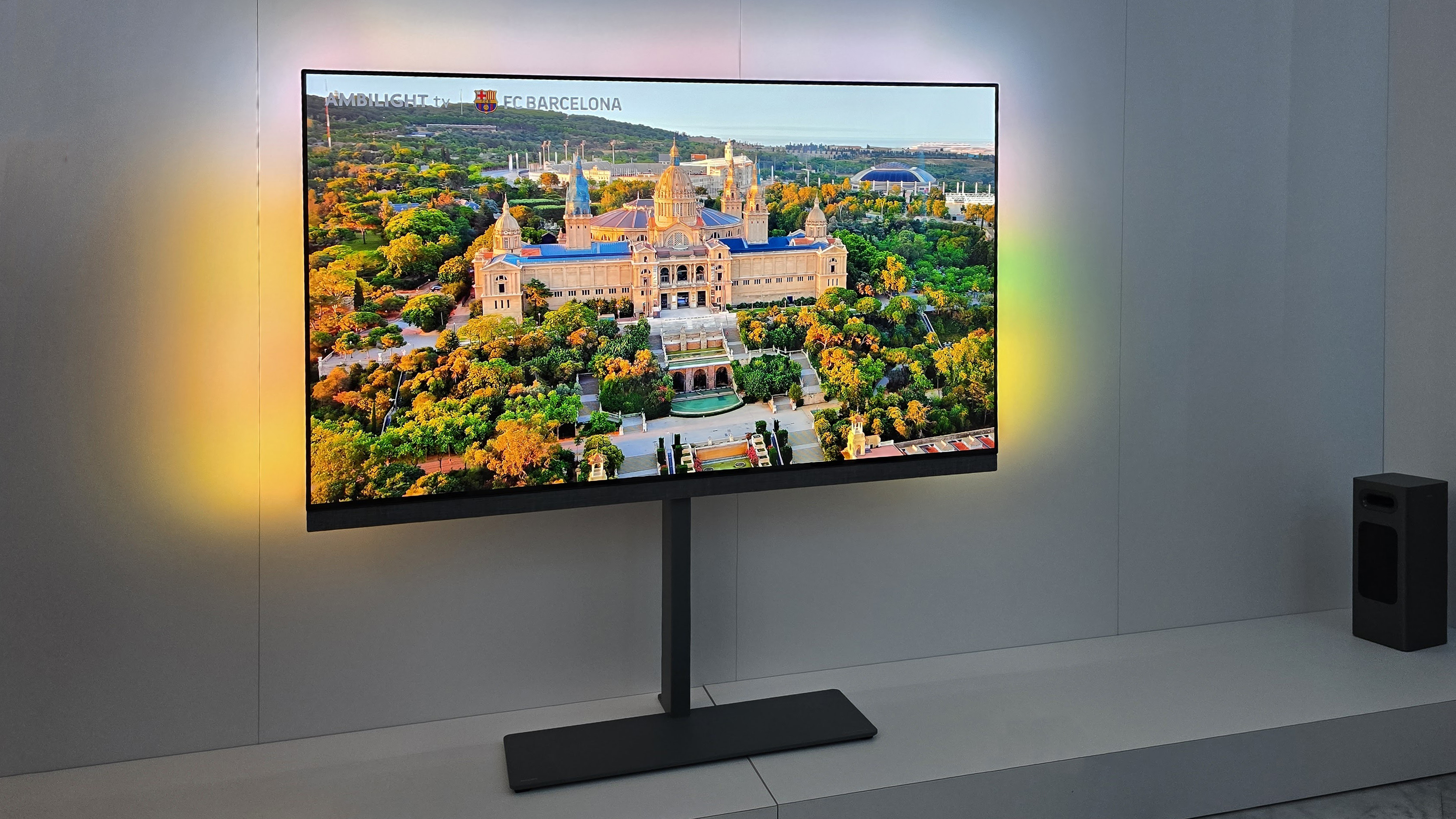
The TV landscape is really interesting right now: gone are the days of all major brands launching their latest sets at the Consumer Electronics Show in early January. Instead there's a staggered launch cycle to see what the future of TV is all about: and after LG and Samsung revealed their hands at CES 2024 – with impressive wireless OLED and new anti-reflective QD-OLED, respectively – Philips held back a few weeks before revealing its 2024 range.
I've already written about the Philips OLED 909 and OLED 959 models, both of which use the brightest consumer OLED panel available to date, adding a big tick next to the 'searing brightness' box. That panel is supplied by LG, as the Korean maker is the key producer of such panels, but Philips adds its own processing to give its images distinction when it comes to picture quality.
But it's not actually the panel or the brightness or the processing that's most caught my attention about Philips' forthcoming OLED TVs. It's Philips Ambilight – the rear-positioned LED lighting technology that expands an on-screen image beyond the panel and onto surrounding surfaces – that sees a real step-up in the 2024 range for a couple of reasons.
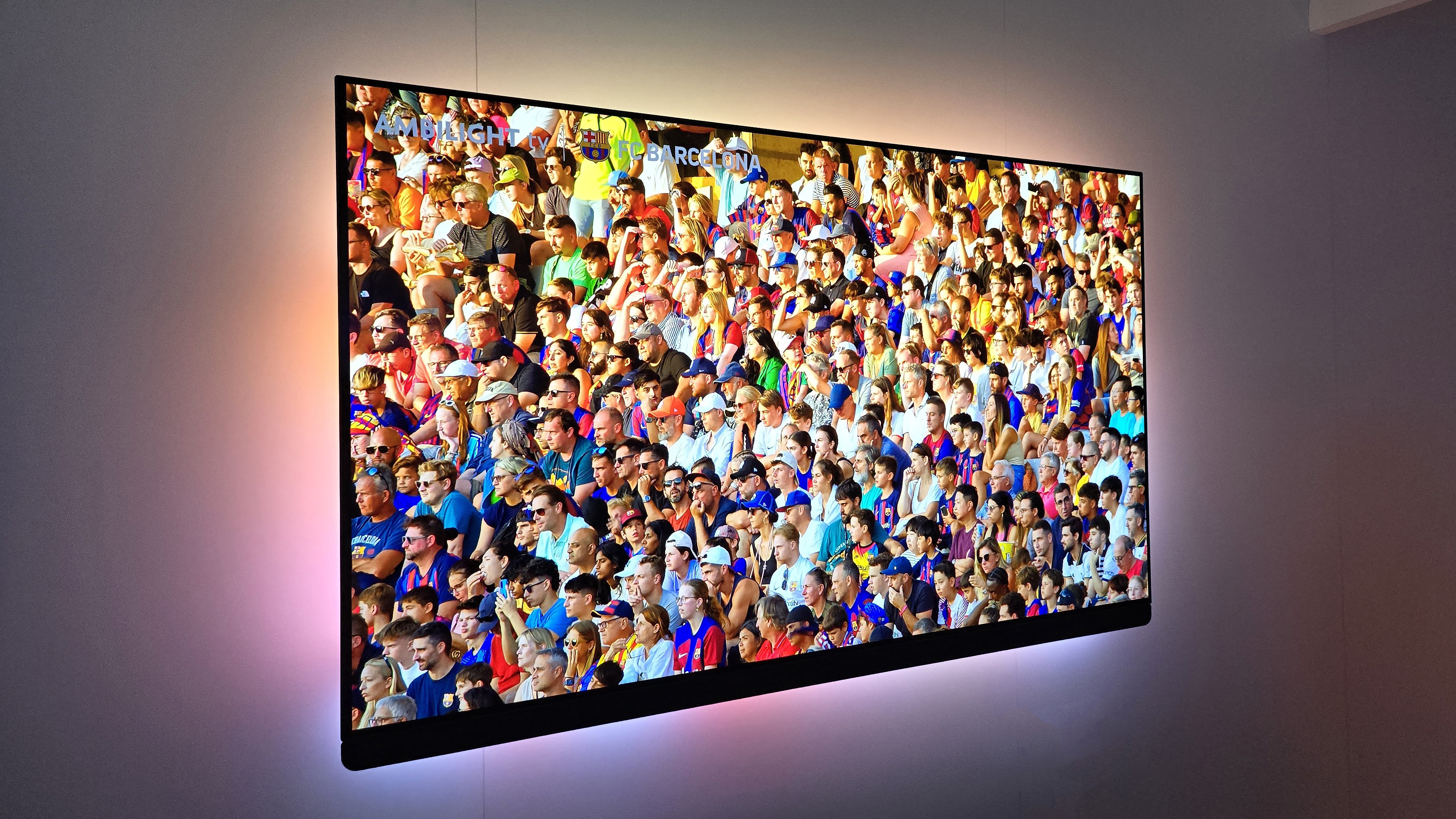
At a showcase in Europe earlier this month I was able to get a teaser preview of the forthcoming OLED 909 (pictured above, isn't it lovely?), which is expected to launch in the summer, and it brings four-sided Ambilight back to the fore – ideal for wall-mounting with all-encompassing lighting surround, which had lacked from the majority of Philips' last-generation range (oddly, as it was more widely available on earlier generations).
While that form of Ambilight is great to see, Philips isn't stopping there this year: its flagship of flagships, the OLED 959 model – which is due to arrive much later in the year; towards the winter, I'd wager, given its "Q3" launch window – is the very first model to feature Philips' all-new Ambilight Plus.
As its name suggests, Ambilight Plus takes things up a notch. To my eyes it's much brighter, for starters, but it's also much more intelligent thanks to being "higher resolution" and "can project up to four different halos at different depths" for a new, more dynamic Ambilight effect. It needs to be seen to be really appreciated though – my gallery of images, included below, goes some way to show off the pronounced halo effect, but in-person viewing makes for a very different experience.
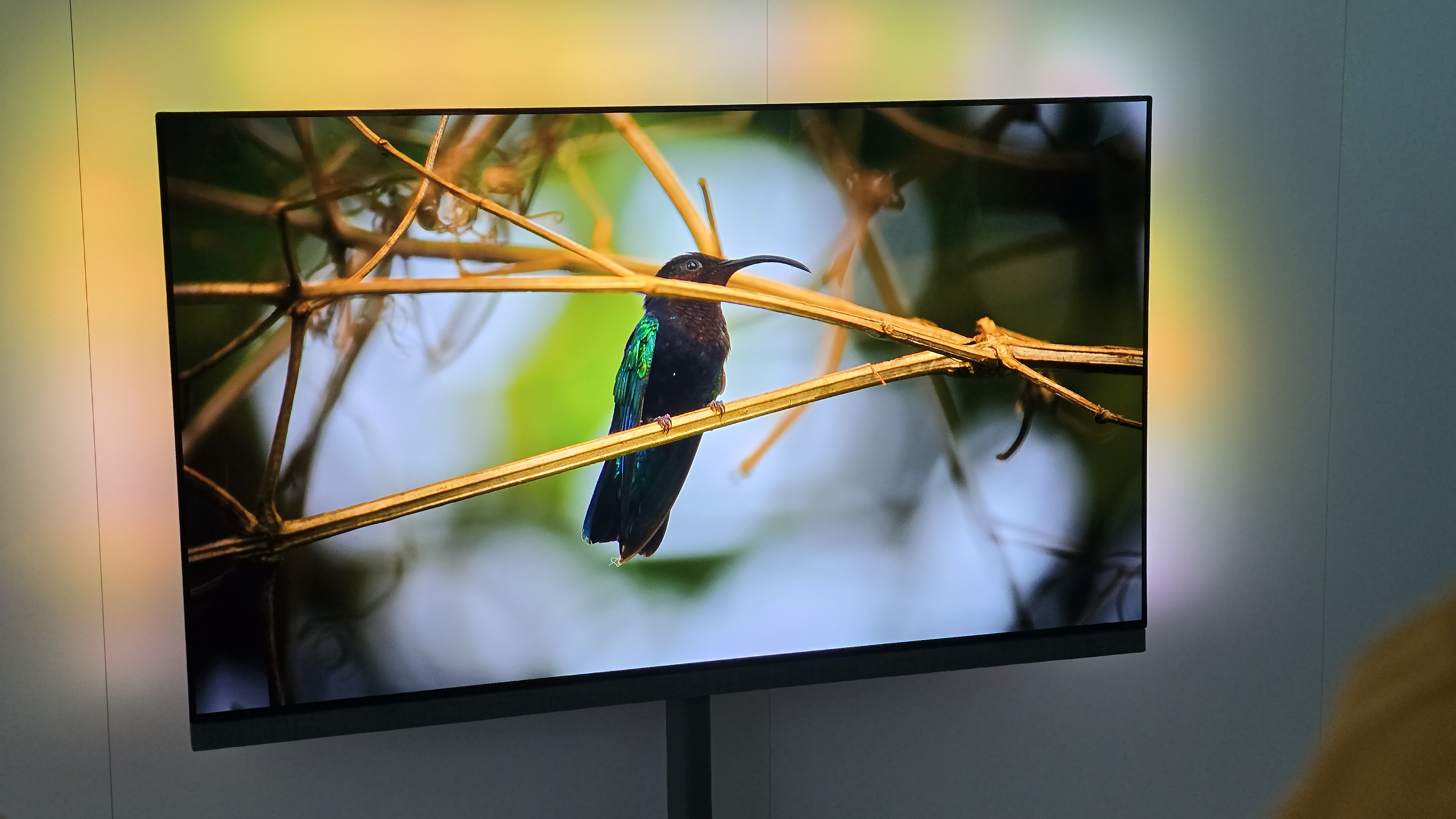

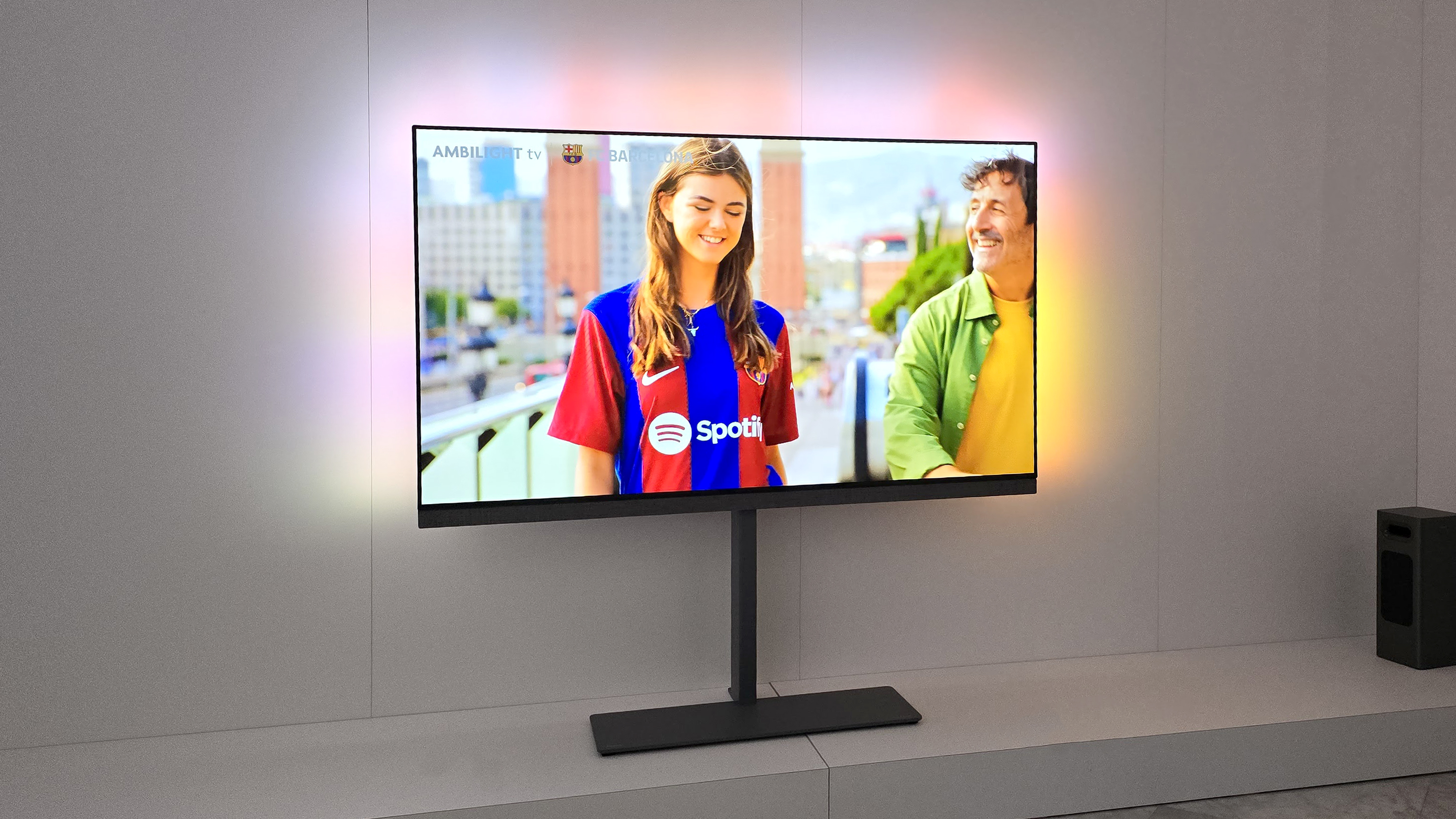
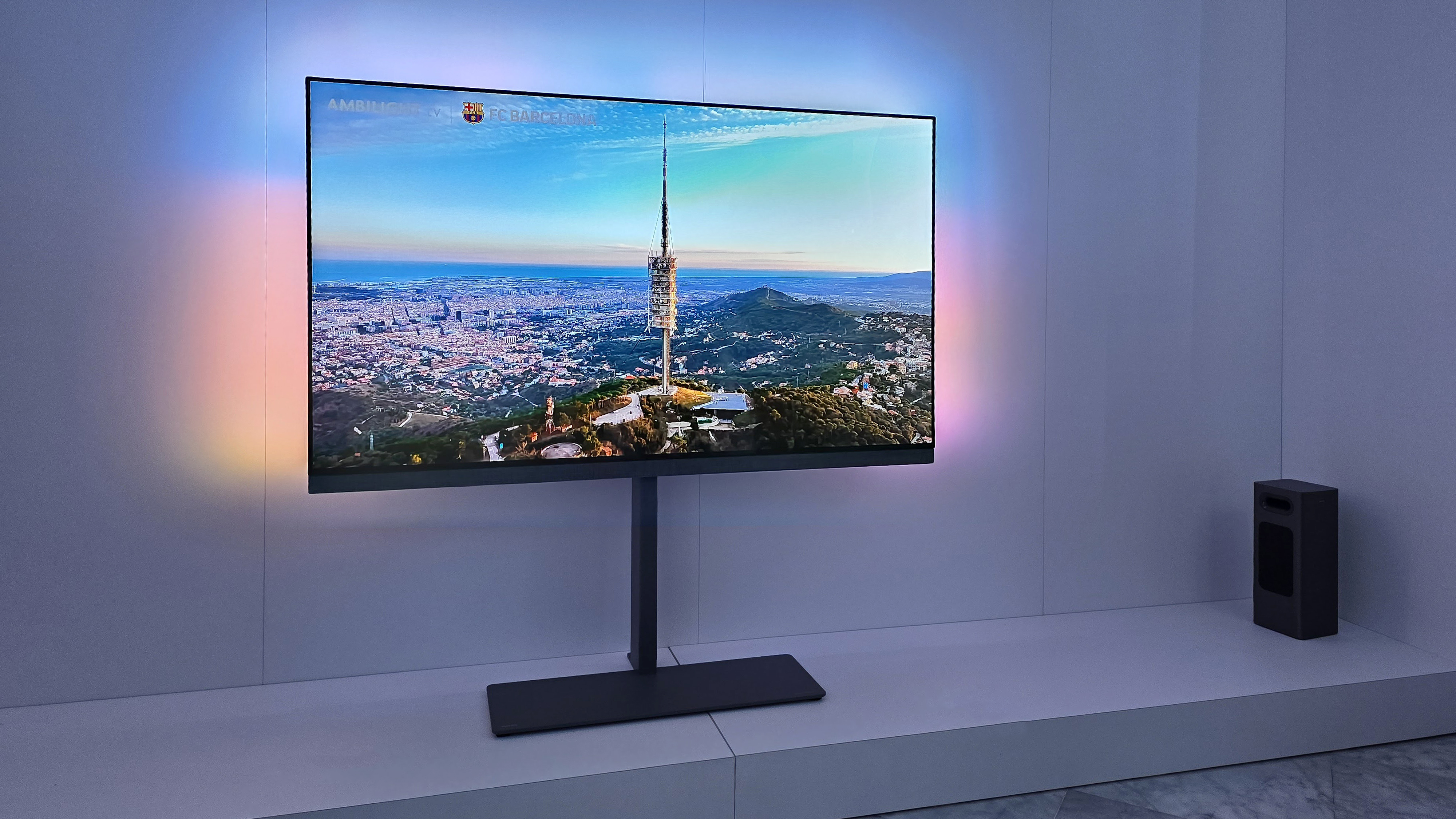
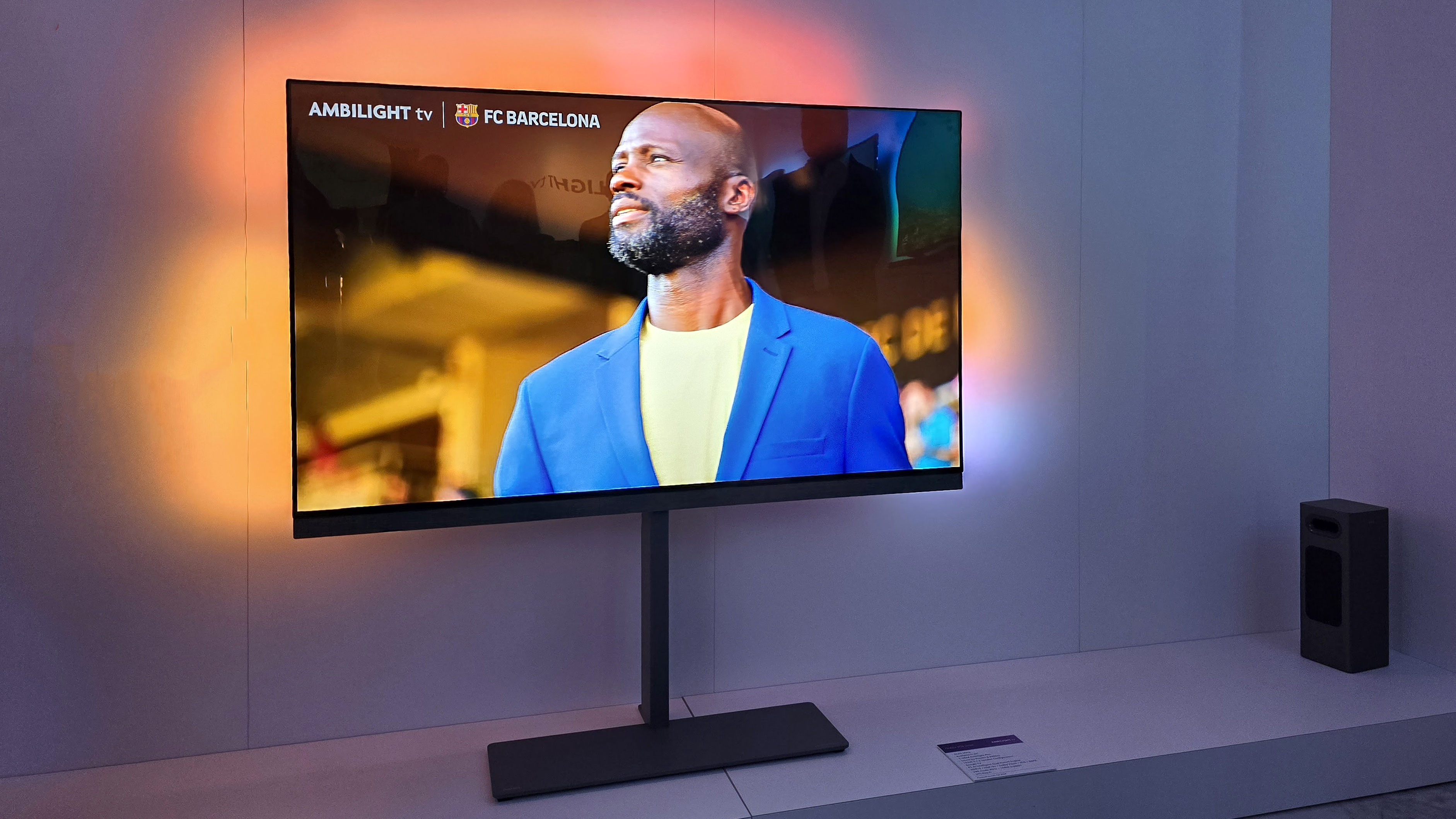
Ambilight Plus' most standout feature for me is the way it can effectively isolate subject movement on-screen and project that around the TV's frame onto surfaces as if it's echoing a particular subject. But it does this as if moving one Ambilight projection through another layer of illumination, which is so fast-moving that it's borderline distracting – but I'm always mesmerised seeing new tech on display.
Sign up to the T3 newsletter for smarter living straight to your inbox
Get all the latest news, reviews, deals and buying guides on gorgeous tech, home and active products from the T3 experts
At this point it's worth noting that Ambilight Plus, just like the OLED 959 model, is a long way from finished. Philips was presenting early-stage demos and commented that the final product and level of control would likely differ significantly. But as Philips' standout feature offering compared to other manufacturers' best TVs of the year, I'm excited to see how that unfolds.
The OLED 959 in itself is an impressive-looking product anyway: a monolithic design, stand-mounted with all the cables hidden, it features an integrated Bowers & Wilkins 5.1.2 Dolby Atmos soundsystem that ought to be ear-shatteringly brilliant (but wasn't to be heard at this demo as, just like Ambilight Plus, it's a work in progress).
That soundsystem is even more integrated than previous soundbar-like implementations – as I've seen before in the OLED 986 (the 959's predecessor, ultimately) or step-down OLED 937 – and, if those are anything to go by, then that paired with Ambilight Plus is going to make for a unique and stellar sound-and-vision proposition. And probably a hyper-expensive one too. But even if it costs the moon, I'm still excited to see the progress of TV tech in 2024. Ambilight is clearly here to stay – and I love it.

Mike is T3's Tech Editor. He's been writing about consumer technology for 15 years and his beat covers phones – of which he's seen hundreds of handsets over the years – laptops, gaming, TV & audio, and more. There's little consumer tech he's not had a hand at trying, and with extensive commissioning and editing experience, he knows the industry inside out. As the former Reviews Editor at Pocket-lint for 10 years where he furthered his knowledge and expertise, whilst writing about literally thousands of products, he's also provided work for publications such as Wired, The Guardian, Metro, and more.
